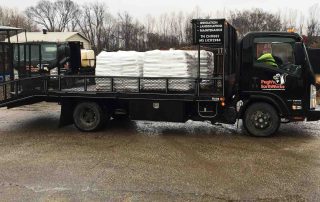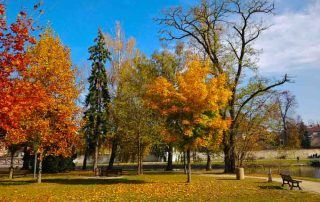Mastering Late Summer Landscaping for a Breathtaking Fall Commercial Landscape Transition
Pugh's Earthworks Late summer provides the perfect opportunity to set the stage for a thriving fall landscape. With days gradually cooling and the bustle of peak summer subsiding, it is the ideal time for commercial landscapers, property managers, and business owners to get proactive. Anticipating the needs of your landscape now for Fall Commercial Landscape Transition can prevent headaches later and ensure a seamless transition into the vibrant hues of autumn. Pugh's Earthworks is the premier Mid-South Commercial Landscaping to contact for all your landscaping needs. In this guide, we will walk you through essential late summer commercial landscape steps to guarantee your property looks its best as fall arrives. We will cover everything from essential lawn care practices to strategic planting and maintenance tips. The Importance of Early Preparation for Fall Preparing your landscape in late summer is crucial for a robust and colorful fall display. It is during this window that you lay the groundwork for healthy plant growth and prevent potential issues caused by the changing season. Proactivity here means fewer surprises as temperatures drop and foliage begins to turn. Late summer preparation helps prevent diseases and pest infestations that thrive in cooler weather. By addressing these challenges ahead of time, you are ensuring your plants have the strength to withstand the stress of seasonal changes. Additionally, this period allows you to evaluate the overall health of your landscape, making it easier to implement necessary adjustments. For property managers and business owners, maintaining an immaculate landscape is not just about aesthetics; it is a reflection of your brand and can significantly impact client perceptions. Investing in late summer preparations ensure your property will continue to make a positive impression as the seasons shift. Assessing Your Current Landscape Before you begin any late summer landscaping activities, it is essential to thoroughly assess your current landscape. This step provides a clear understanding of what needs attention and helps you prioritize tasks effectively. Start by inspecting your turf, trees, shrubs, and flower beds for signs of stress, disease, or pest issues. Turf health is particularly important during this assessment phase. Look for patches of brown grass, which may indicate drought stress or pest problems. Also, take note of any excessive thatch build-up that could be suffocating your lawn. Addressing these issues promptly will support robust grass growth well into the fall. Another vital aspect of your assessment should involve examining irrigation systems. Check for leaks, clogs, or areas of poor coverage. Ensuring your system is working efficiently will save water and reduce costs while keeping your landscape adequately hydrated. Essential Lawn Care Practices Lawn care is a critical component of your late summer commercial landscape steps. Proper mowing, watering, and fertilization can make all the difference in preparing your lawn for fall. Start by adjusting your mowing height to leave grass slightly longer. This practice allows grass to retain more moisture and develop deeper root systems. Irrigation requires careful management during late summer. Watering deeply but infrequently encourages roots to [...]


